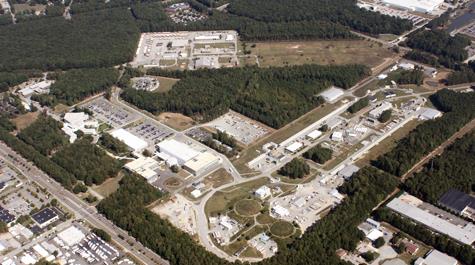Nuclear physics panel advances Electron-Ion Collider development
A set of recommendations on ways to advance nuclear physics research in the United States includes the significant development of programs at Jefferson Lab in Newport News, a facility where scores of William & Mary scientists conduct research.
Notably, the plan recommends development of an Electron-Ion Collider “as the highest priority for new facility construction,” following the completion of a Michigan facility now being built. Jefferson Lab is one of two possible hosts for the new Electron-Ion Collider (EIC); the other site is in New York state.
The planning document, “Reaching for the Horizon, The 2015 Long Range Plan for Nuclear Science,” also recommends continuing the scientific program associated with the 12 GeV upgrade of the Continuous Electron Beam Accelerator Facility at Jefferson Lab, the Thomas Jefferson National Accelerator Laboratory.
The new plan was unanimously accepted by the Nuclear Science Advisory Committee. NSAC is a committee composed of eminent scientists who have been tasked by the U.S. Department of Energy (DOE) and the National Science Foundation (NSF) to provide recommendations on future research in the field with the aim of keeping the U.S. on the cutting edge of nuclear and accelerator science.
“Jefferson Lab looks forward to DOE and NSF adoption of the NSAC recommendations and to working with DOE in helping to implement the vision for nuclear physics in the coming years,” Robert McKeown, deputy director for science at Jefferson Lab and Governor’s Distinguished CEBAF Professor of Physics at William & Mary said in a JLab release.
An Electron-Ion Collider would provide new capabilities in the study of Quantum Chromodynamics, the theory that describes how particles called quarks and gluons build protons, neutrons and nuclei.
An EIC constructed at Jefferson Lab would be a valuable resource for William & Mary scientists, many of whom have been conducting research at the Newport News facility for years. Jefferson Lab records show a total of 61 William & Mary scientists listed as current users of the facility.
 Skip to main content
Skip to main content

